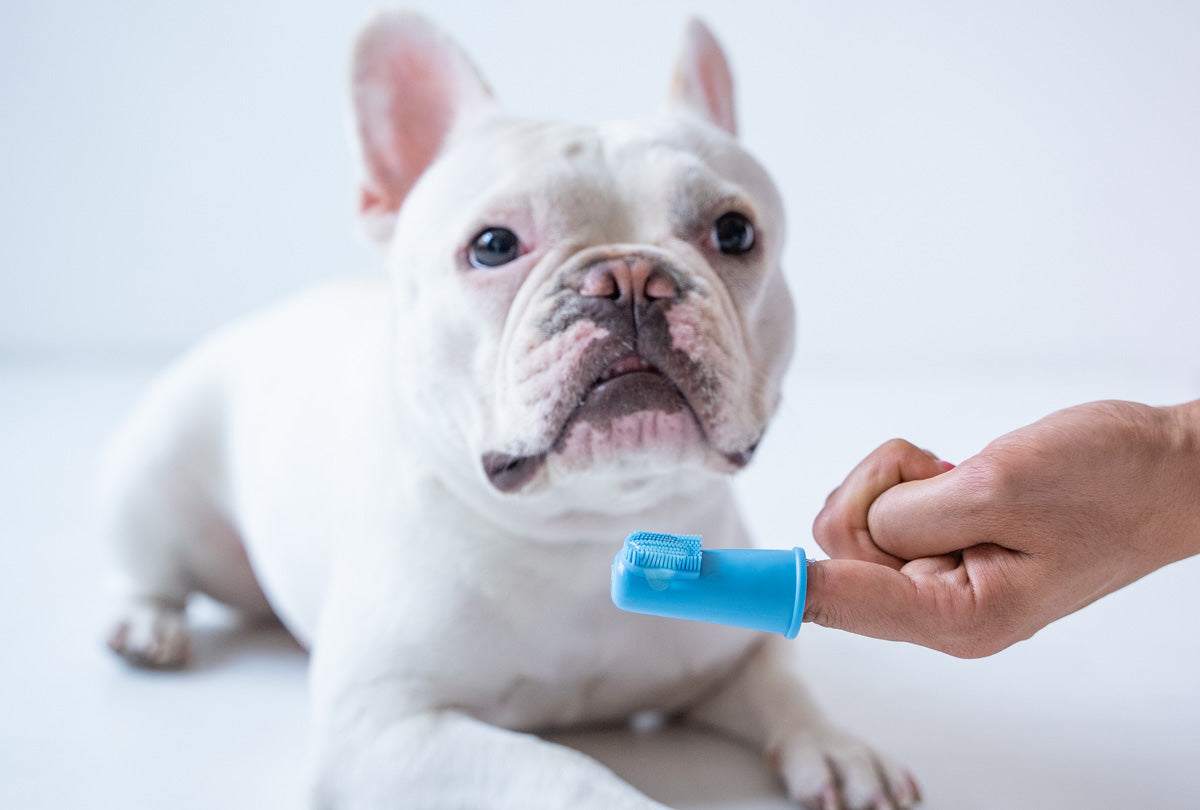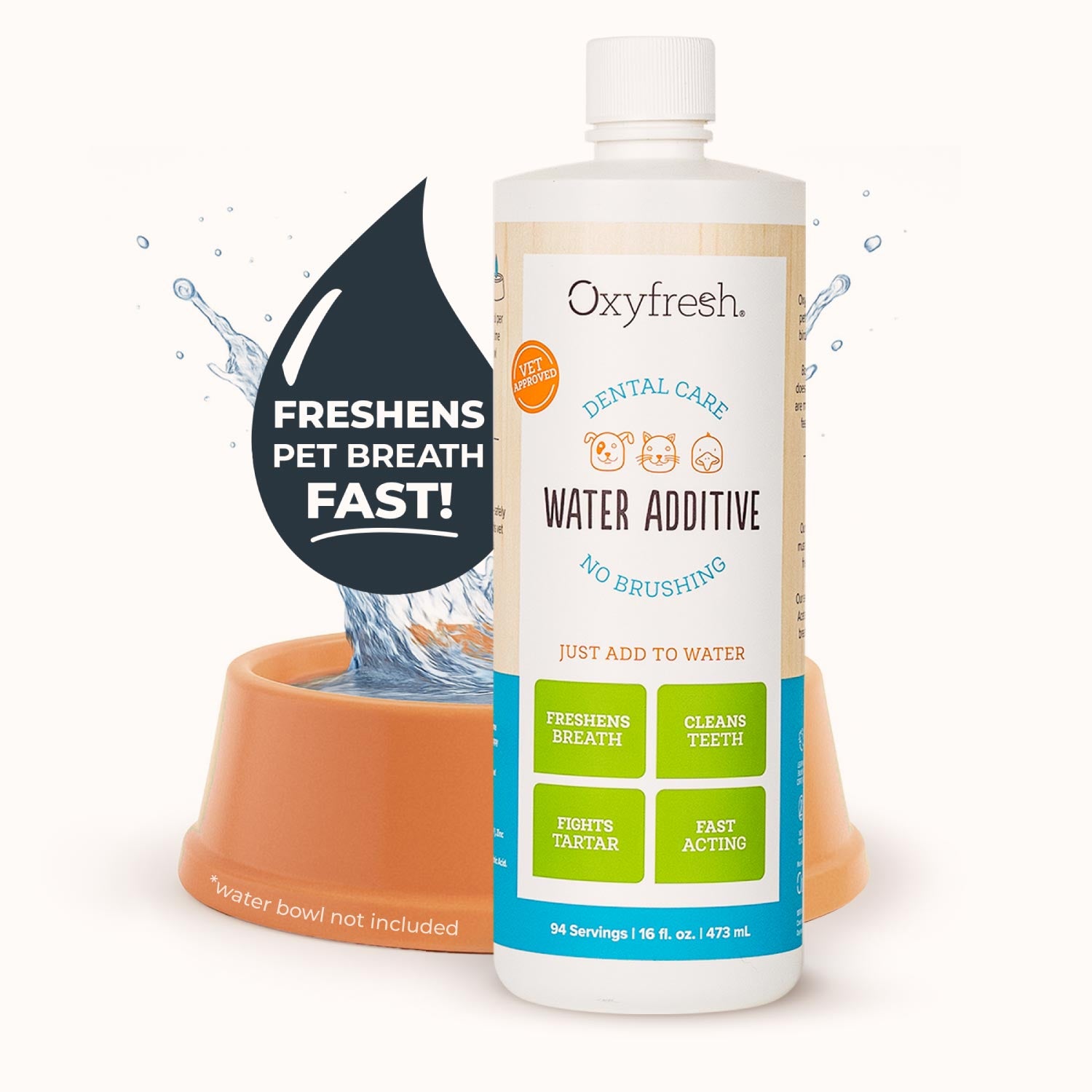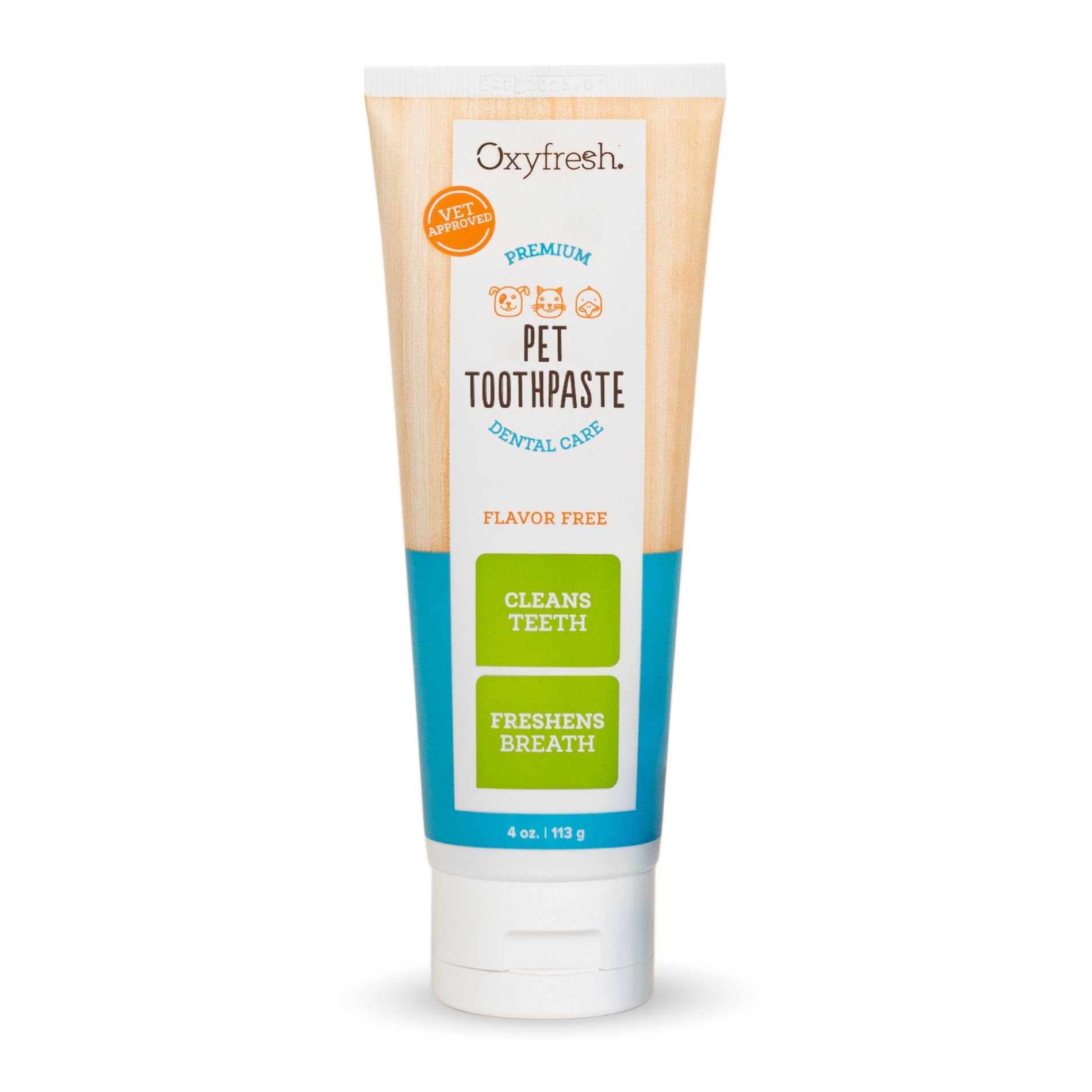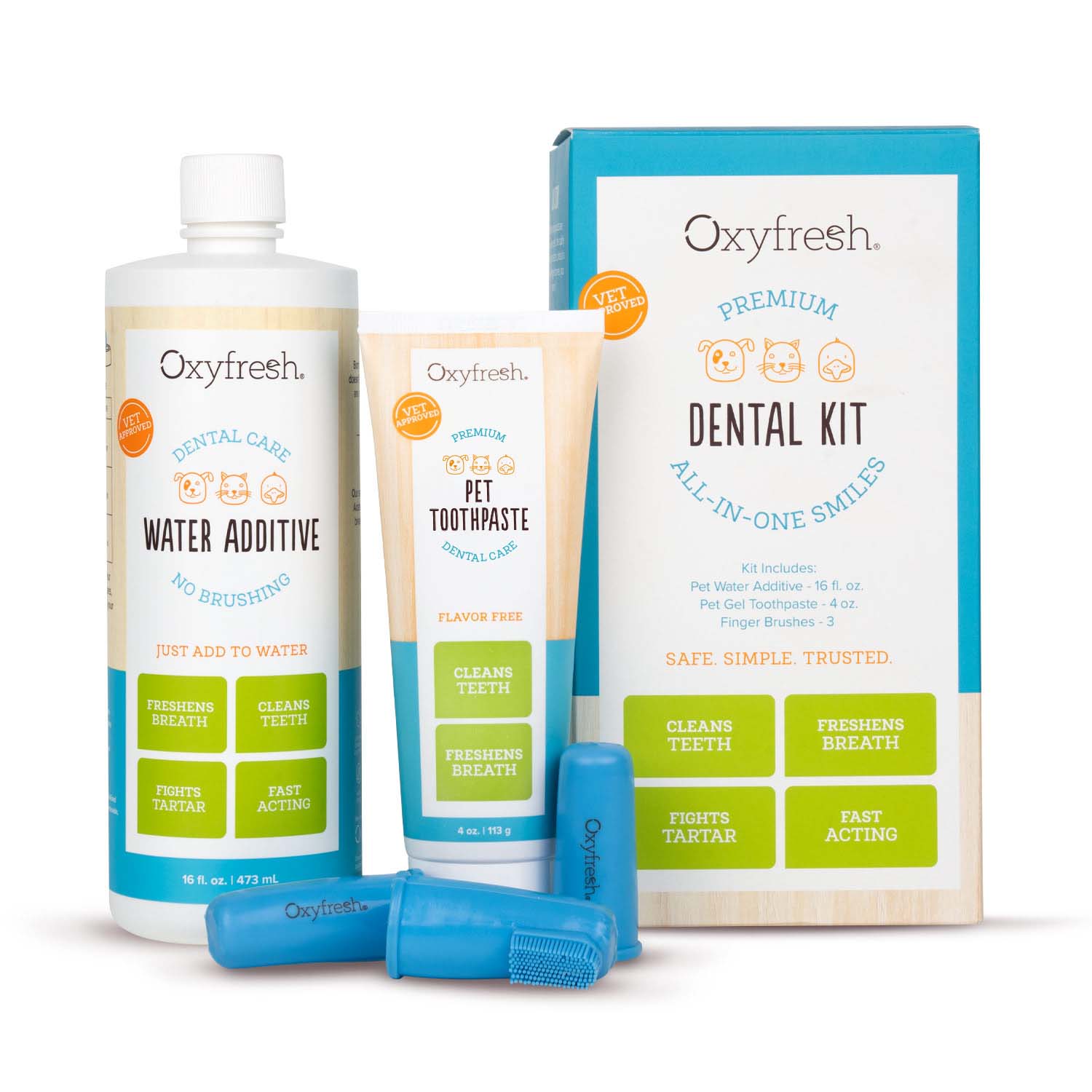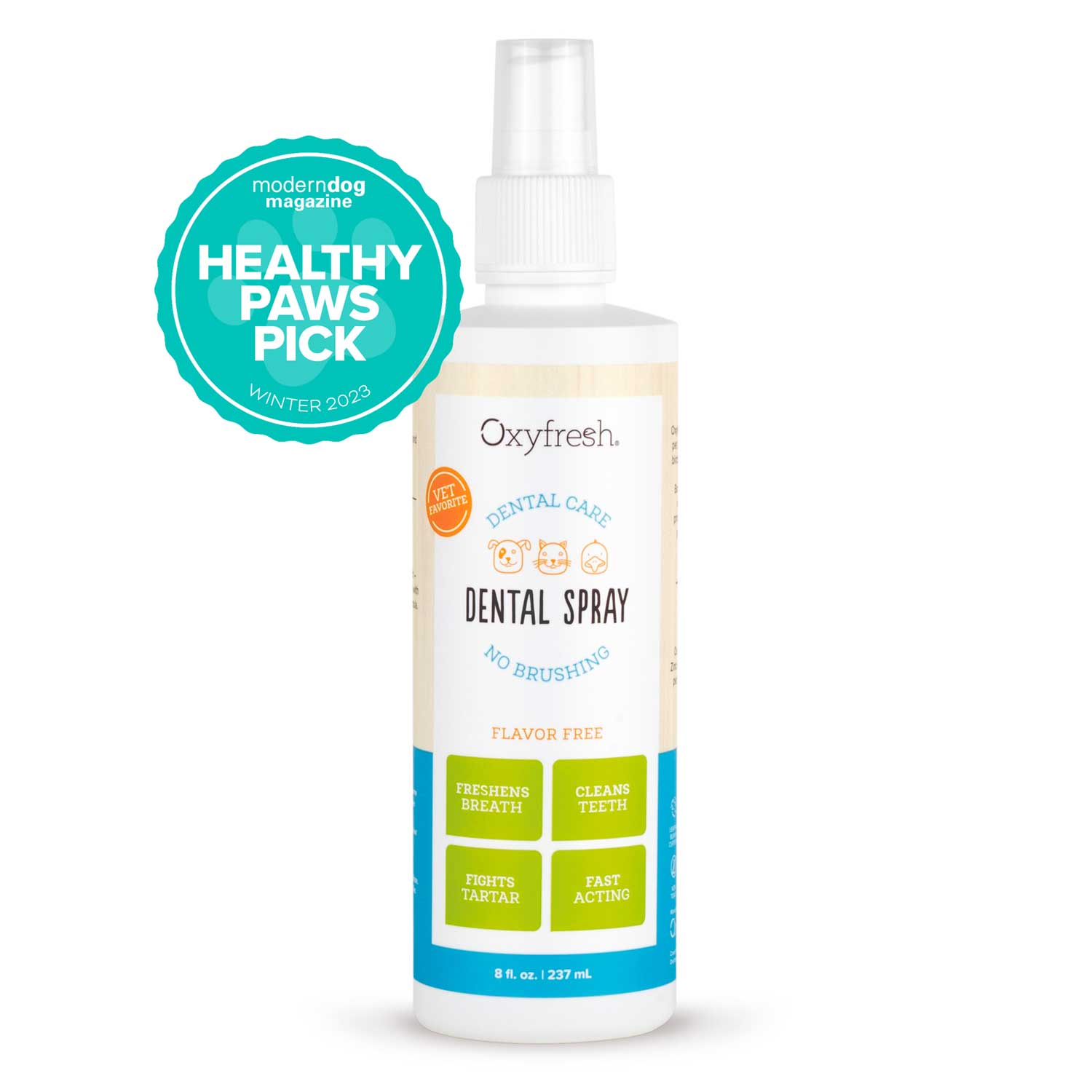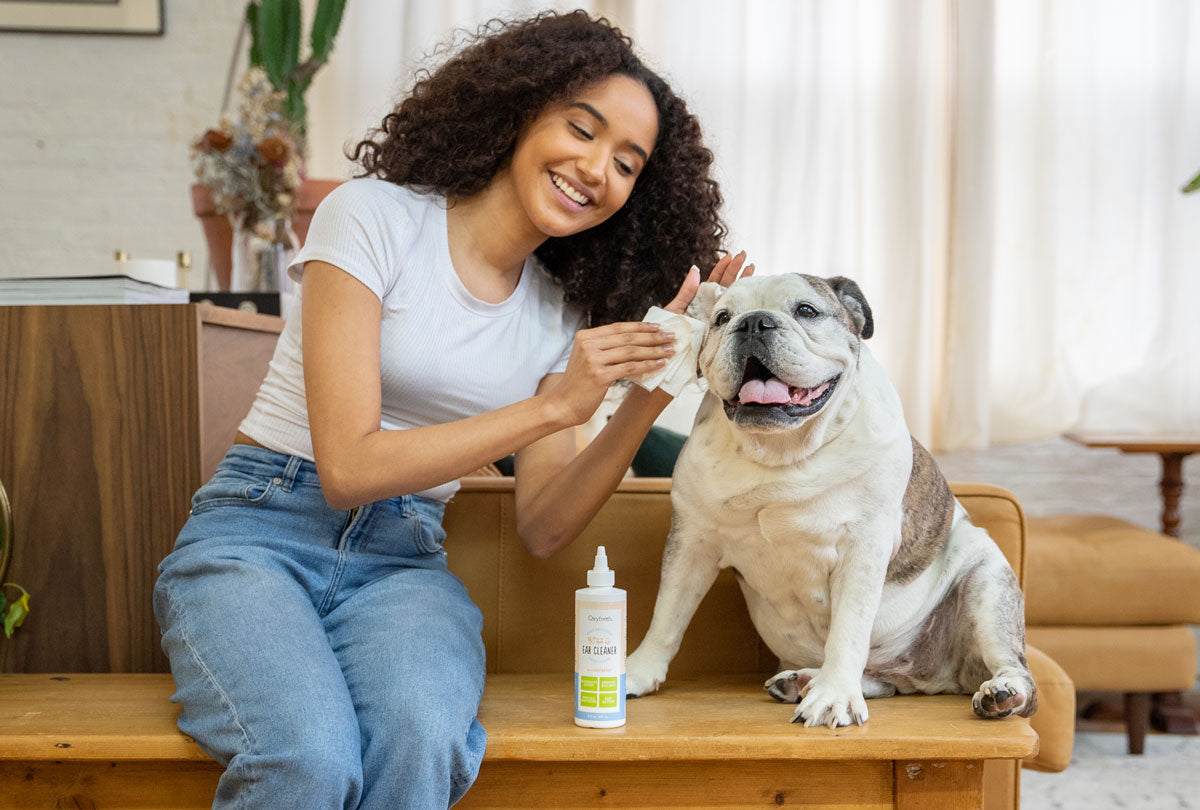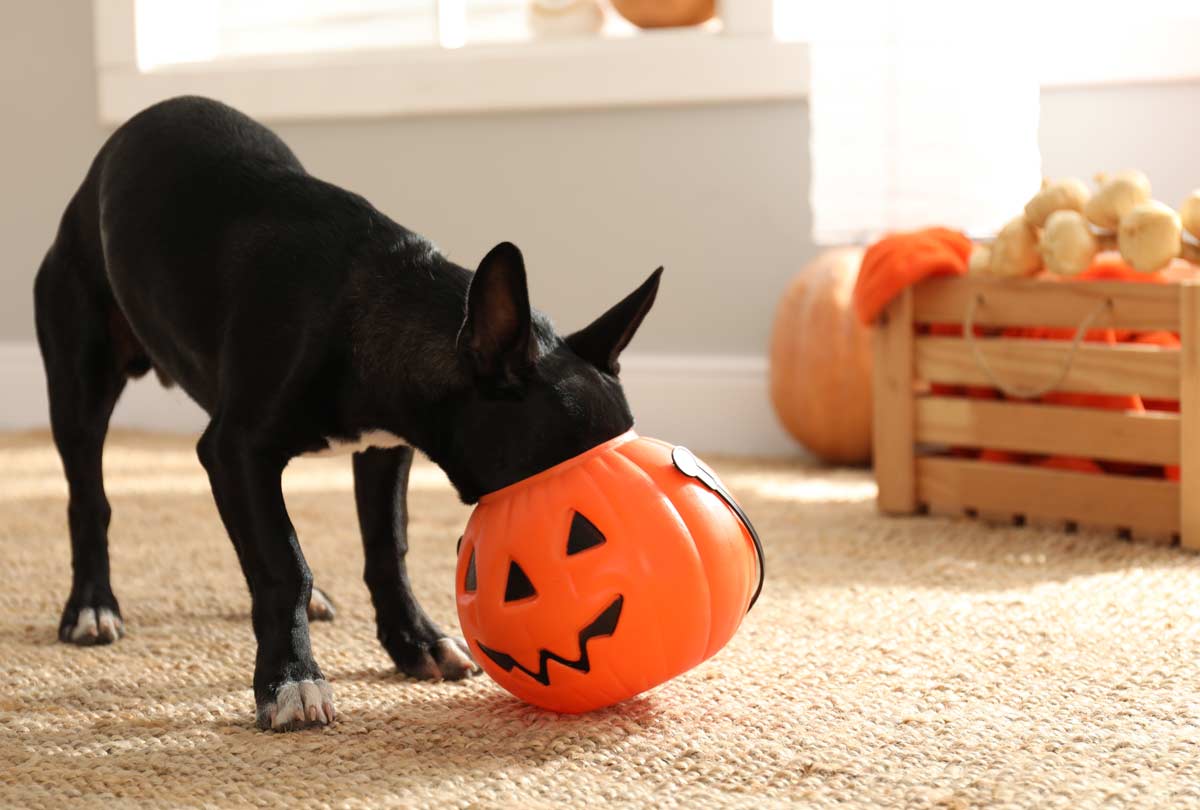Read on to discover why a dog toothbrush may be one of the best purchases you’ll ever make. Plus, we’ll answer all your questions on how to make dog toothbrushing a walk in the park.
Do I Need to Brush My Dog's Teeth?
If you haven’t been brushing your dog’s teeth, you’re not alone. According to a pet toothbrushing poll, only 7% of dog parents brush their dogs’ teeth every day. This is a problem because brushing is the best way to combat gum disease, which affects up to 90% of dogs by age three.
Signs of gum disease in dogs include bad breath, tartar buildup (a yellow-brown substance that forms when plaque hardens), and red, inflamed gums. Left untreated, this painful condition can cause the teeth to separate from the gums and bacteria from infected gums to spread to the vital organs. No surprise then that adopting a dental routine could add two to five years to a dog’s life. (Now that’s news to get the tails wagging!)
In its early stages, dog gum disease is completely reversible without vet intervention (aka a professional dental cleaning), so it’s important to act now and get your paws on a dog toothbrush and toothpaste and learn how to brush your dog’s teeth.
How Do I Use a Dog Toothbrush? Brushing Basics.
- Gather your supplies: a dog toothbrush and toothpaste plus a can-do attitude.
- Apply a pearl-size drop of toothpaste to the dog toothbrush.
- Kneel in front of your dog or hold them in your lap if they’re a lap dog. Lift one side of their lips (they do not need to open wide) with one hand while you brush with the other.
- Do one side of the mouth at a time, both top and bottom, brushing along the gum line at a 45-degree angle using gentle, circular strokes. Just focus on the outside tooth surfaces. This is where plaque and tartar build up.
- Calmly praise your pup as you brush to put them at ease.
- Give a treat after brushing, even if it didn’t go well. That way, they’ll build a positive association with it. On that same note, never yell at your dog if brushing didn’t go well, otherwise they’ll build a negative association with brushing.
Tips to Make Dog Toothbrushing Easier
- Set yourself up for success. A week or two before you ever introduce a dog toothbrush, help your pooch get used to you handling their mouth. On a regular basis, dip your finger into broth or tuna or salmon juice and rub your finger along their gum line.
- Timing is everything. Brush your dog’s teeth when they’re tired, like after a long walk or play date. This can make all the difference in the world.
- Take it slow. This is a marathon, not a sprint. You may only be able to brush your dog’s teeth for a few seconds when first starting out. But keep with it and you’ll be able to eventually increase your time to two minutes.
- Make it a two-person job. Ever notice how easy instructions seem when reading them online? What could go wrong? But the truth is, brushing your dog’s teeth is much easier with two people when you’re first starting out. With time and practice, you’ll be able to tackle it solo.
- Roll with a flavor-free dog toothpaste. Not to point paws, but many dog toothpaste brands fill their products with fake meat flavors, mint (a taste that dogs don’t like) or baking soda, which dogs REALLY don’t like. This can make the brushing experience more difficult than it needs to be. The smartest choice is to go flavor free. Vets recommend Oxyfresh Pet Toothpaste, and so do we! It’s flavor free and the only dog toothpaste to have proprietary Oxygene®, a non-toxic purifying ingredient that neutralizes plaque- and bad breath-causing bacteria at the source. Plus, it’s alcohol-free to pamper their gums. Dogs love it!
How Often to Brush Dog's Teeth
It’s best to brush your pup’s teeth with a dog toothbrush and toothpaste every day, but at a minimum, aim for three times a week to reap the benefits of plaque prevention and fresh breath. If every day feels like an insurmountable task, supplement with a dog water additive. It simply goes into the dog’s drinking water daily to help prevent plaque buildup and keep their breath kissably fresh. Pro tip: make sure the water additive is unflavored, otherwise, your dog may not drink their water.
FAQ About Dog Toothbrushes
Can You Use a Human Toothbrush on a Dog?
Yes, you can use a human toothbrush on a dog, but if you go this route, it’s smart to use a toothbrush designed for a child. Children’s toothbrushes have smaller heads and handles, so they are easier to maneuver around in your dog’s mouth. And be sure to get a soft-bristled toothbrush. While hard bristles can remove more plaque, they can also damage your dog’s gums. Brushing should not hurt, and if it does, your dog will have a harder time adapting to a tooth brushing routine.
Is a Dog Finger Toothbrush Better Than a Toothbrush with a Handle?
Both types of dog toothbrushes will do the job of removing plaque from your dog’s teeth. However, many people find that finger toothbrushes are top dog due to ease of use. Because they simply slip on over your finger, you can reach your dog’s back molars better, the areas where plaque and tartar tend to build up most. Dog finger toothbrushes are also less bulky, which makes it easier to brush the teeth of small or toy breeds. Finger toothbrushes can be found in the baby aisle at the grocery store, pet stores, online, or as part of dog dental kits.
Can My Pets Use the Same Dog Toothbrush?
Can or should are important differentiators here. It’s not wise to use the same dog toothbrush on your pets because they can swap bacteria and microorganisms. Kind of like it would be gross sharing a toothbrush with your friends and neighbors, let each of your dogs have their own toothbrush.
How Often to Replace a Dog's Toothbrush?
A dog’s toothbrush should be replaced every three to four months. Replace the dog toothbrush sooner if the bristles are bent, frayed, or falling out, or if there’s residue buildup or discoloration of the brush.
How Do You Clean a Dog Toothbrush?
Simply rinse your dog’s toothbrush with warm water after brushing. That’s it! Make sure to remove any debris or food particles with your hand or a toothpick. If you want to do a deep clean of the toothbrush, many dog finger toothbrushes can be washed in the dishwasher. But if it grosses you out to wash your dog’s toothbrush with your dishes, we get that. If that’s the case, try this instead for either kind of dog toothbrush (finger or handled): Soak the toothbrush for 30 minutes in a mixture of ½ cup water and ½ cup vinegar. Rinse thoroughly after the soak.
Where to Store Your Dog's Toothbrush?
Obviously don’t store it in your own toothbrush holder, as you don’t want to accidentally use it when you’re a sleep-deprived zombie. Instead, store it upright in a cup or toothbrush holder. Never use a drawer or closed container, as confined, moist spaces can cause bacteria to flourish. Besides, having your dog’s toothbrush out in the open where people can see it can lead to major bragging rights.
Best Dog Toothbrushes, Paws Down
Brushing your dog’s teeth is now easier – and more affordable – than ever with Oxyfresh’s dog finger brush kit, featuring six soft and flexible silicone finger brushes. Gentle on gums but tough on plaque, these dog finger toothbrushes are reusable, dishwasher-safe and fit like a glove over your finger. No more wrestling with bulky dog toothbrushes! BPA-free, they’re the alpha at removing plaque while still pampering and stimulating dogs’ gums.
The bottom line: We all want a six-pack, but if the gym is not your thing, get this six-pack of dog finger toothbrushes that will really beef up your dog’s dental health AND make brushing easy. Pair with Oxyfresh Pet Toothpaste for the ultimutt brushing experience. Your dog will thank you!

